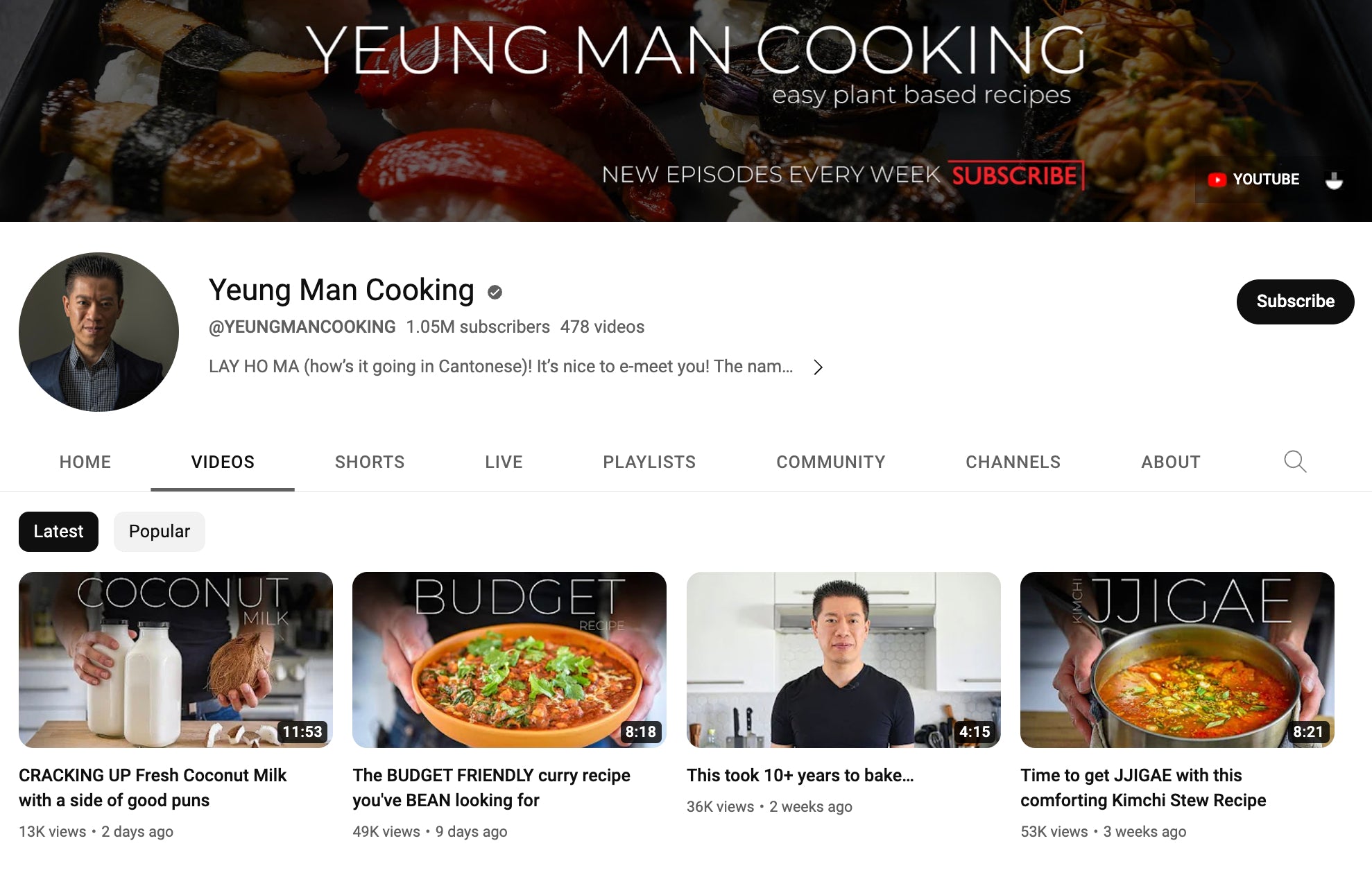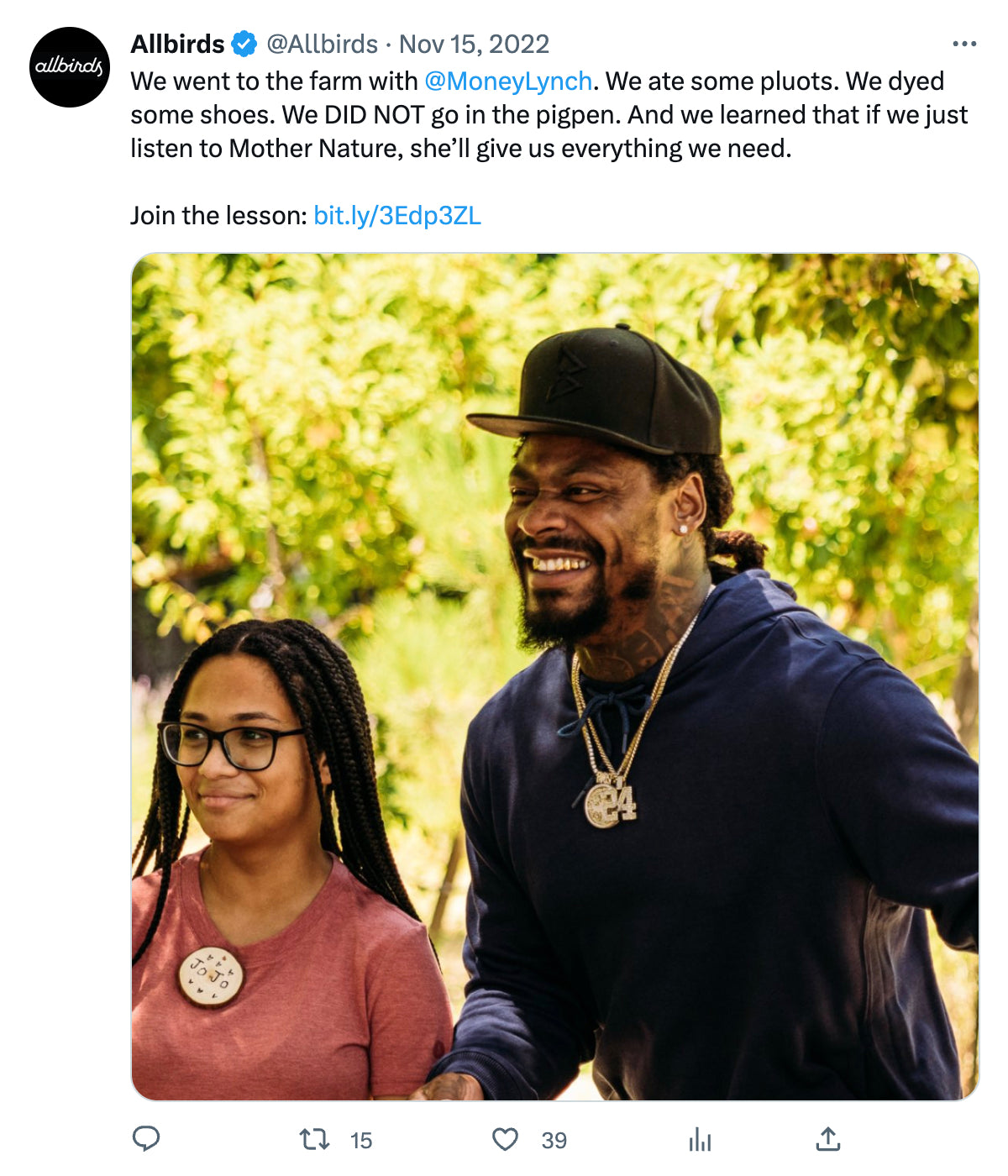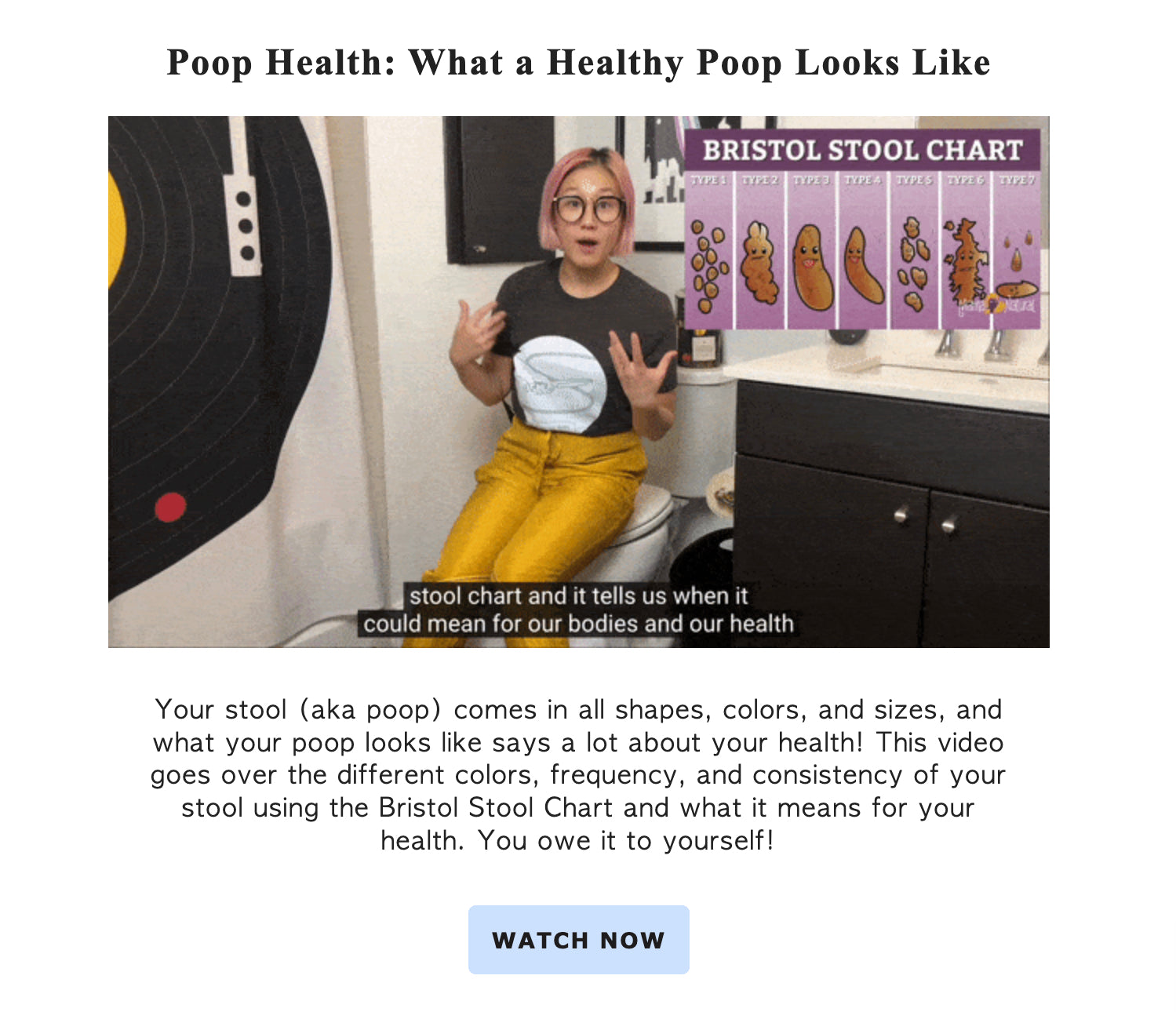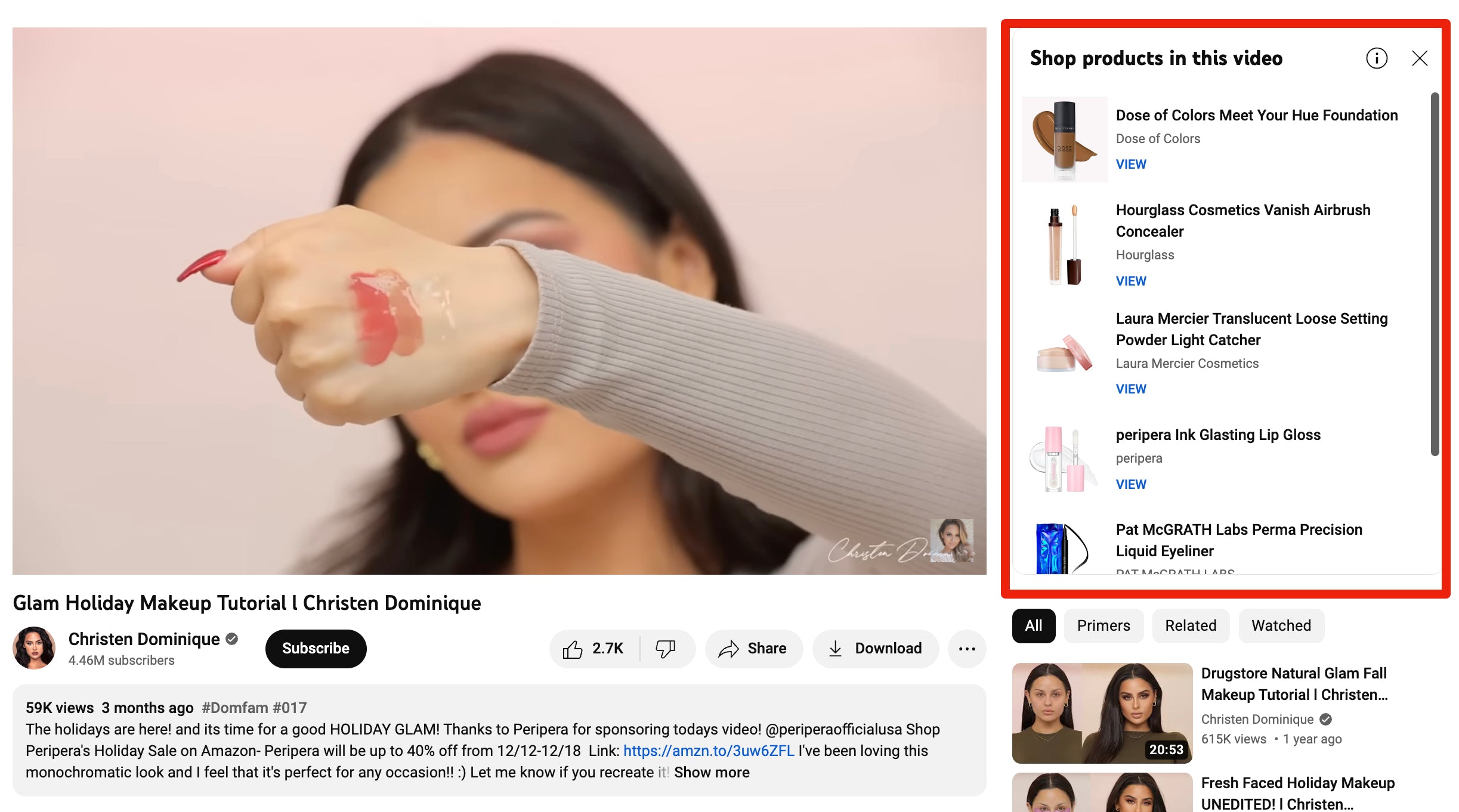The Complete Guide to YouTube Marketing for Ecommerce
This guide will help you understand YouTube marketing and apply it to your brand strategy.
That your brand needs a video There’s no denying it. Video is consumers’ most preferred content format, with 91% of consumers reporting that they want to see more video content from brands. Video platforms like YouTube, TikTok, and Instagram offer creators and businesses the potential to achieve massive reach with both organic and paid content. Plus, the native search capabilities of these platforms make them a powerful tool for product discovery.
Video marketing may seem like a daunting topic at first, but getting started, posting videos, and driving engagement with your content is easier than you think. If you just get the basics right, you can quickly drive more traffic and sales to your business.
This guide will help you set up your YouTube channel and understand YouTube marketing. Learn best practices for adding the power of video to your brand strategy through examples of successful brand channels, including effective content formats and promotion strategies.
What is YouTube Marketing?

YouTube marketing is the practice of using video content on YouTube to promote a brand or product. It involves creating and promoting videos on a brand-specific YouTube channel. Examples of YouTube marketing include using search engine optimization (SEO) to rank high on searches related to your branded videos, working with influencers to expand your brand’s reach, and running video ads on YouTube to provide promotional content to potential customers.
Branded YouTube channels share a mix of content and formats, from how-to videos to explainer videos, to achieve specific business goals like building a community and achieving sales goals.
Is YouTube Marketing Effective?
YouTube is the second most visited website in the world, available in over 100 countries and 80 languages. 62% of YouTube users in the United States access the site daily, and more than 1 billion hours of content are watched on YouTube each day. The number of YouTube users is expected to exceed 1 billion by 2026.
YouTube isn’t just for big business. According to YouTube, 70% of viewers report discovering new brands on the platform. While TikTok has grown its reputation as a product discovery tool and a search engine for Gen Z, YouTube is still going strong, with over 90% of people worldwide reporting that they’ve discovered a new brand or product on the platform. To reap the benefits of YouTube marketing, there are a few steps and best practices to follow when creating content, building an audience, and developing a YouTube strategy. This will help you maximize the potential of YouTube marketing.
How to create a YouTube channel

Before you can create video content, you’ll need to set up a YouTube channel. Below, we’ll walk you through the steps for setting up a fictitious brand, Molly’s Soaps. Note: Before you begin, make sure you have a Google account. You’ll need a Google account to create a channel. Creating an account is free and takes just a few minutes.
1. Create a YouTube account
After you sign in to your Google Account on your browser, go to your YouTube channel page. Here, you’ll see your personal account, any brand accounts you currently manage, and the option to create a new YouTube channel. Click “Create a channel.”

Now choose a channel name and click “Create”.
2. Create a YouTube channel logo
After you set up your account, it’s time to customize your channel to fit your brand, just like you would customize your website. This will help customers find and recognize your brand. On the new channel page, click “Customize Channel.”

This action will open YouTube Studio. Click “Continue.”


To see this screen, switch to the “Branding” tab in the top navigation.

Upload channel-related images, such as profile pictures, banner images, and video watermarks, following the instructions in each section. The specifications for each image are as follows:
- Profile picture : PNG or GIF format, 98px x 98px, less than 4MB
- Banner image (displayed at the top of your YouTube channel): 2048px x 1152px, 6MB or less
- Video watermark (displayed at the bottom right of the video): PNG, BMP, JPG or GIF format, 150px x 150px, less than 1MB
After uploading this image, you can update the image by clicking "Change" or "Remove" as needed.

Now click on “Post” and then “View Channel” to see what you’ve been working on.

- Don't have a logo? Create a free logo in minutes with Logo Maker .
- Tools like Canva make it easy to create custom graphics for your YouTube banner.
- Use Shopify's free image resizer to crop and resize your images to YouTube specifications.
3. Complete your profile
Once you're back in the Channel Customization section, switch to the "Basic Info" tab.

Here, you’ll update your channel name (if applicable), choose a handle, and add a channel description that tells viewers what they can expect from your brand and video content. Since YouTube is a destination for search, the description text is an opportunity to include popular search terms (or keywords) that your potential customers are looking for. In the Molly’s Soaps example, look for keywords like “organic,” “beauty,” “skincare,” and “DIY.”
You can also add links to your website and other social media profiles on this page. Here is an example of how NOTO Botanics uses this space to explain the brand’s mission and link to the store.
4. Bonus: Creating a Channel Trailer
Now that your YouTube channel is ready to be a hub of great content, there are a few additional steps you can take to improve the subscriber experience. Go to “Layout” in the top navigation to see your options.
Channel trailers serve a similar function as movie trailers, giving visitors to your channel a preview of what's to come and helping them decide if they want to see more of your content.
A trailer should be a short video that introduces your brand story, introduces the face of your YouTube channel (i.e. you), and briefly shares what viewers can expect from your YouTube videos. You may only have a few seconds to grab viewers’ attention, so make the most of them! Blenders Eyewear greets new viewers to their channel with a 30-second trailer about their brand community.
 You can also choose to have featured videos just for your subscribers, which will appear instead of the trailer when your subscribers visit your channel homepage.
You can also choose to have featured videos just for your subscribers, which will appear instead of the trailer when your subscribers visit your channel homepage.
Common YouTube video types
Now that your channel is ready to welcome content and viewers, it’s important to understand which YouTube video formats are best suited to your brand and goals.
Popular formats include:
- Customer Reviews, Case Studies and Testimonials
- Product Demo Video
- YouTube Live
- Vlogs
- YouTube Shorts
- Training videos, instructional videos and tutorials
- Internet Trends and Meme Videos
- Other YouTube video formats
Customer Reviews, Case Studies and Testimonials
Customer testimonials are video reviews written by real customers after using a product. This format is very effective for brands, helping to build credibility and trust in their claims. It is also very effective for sales. 89% of people said they decided to purchase a product or service after watching a video.
For example, Fresh Beauty compiled video testimonials from its customers into a playlist accessible directly from the brand’s homepage.

Encourage your customers to write reviews of your products and offer incentives to encourage video submissions. You can also create video callouts like the ones Fresh created. Testimonials can be created by editing video reviews from your customers. Similar to testimonials, case studies are centered around customer experiences and are typically created by your brand, unlike reviews, which are user-generated content.

Product Demo Video
Product videos are educational videos that show customers how to use your product. This type of video helps customers determine if the product is right for them, if they can use it, and what results they can expect.
Essential elements of a product demo video are a clear explanation of how to use it and multiple angles or views of each step. In some cases, the person demonstrating the product may need to have common characteristics with the target audience. Here is an example from hair brand Batiste.

YouTube Live
YouTube Live is another live streaming option for creators. Connecting with fans and subscribers in real time is a unique way for brands and creators to collect feedback, answer customer questions, and communicate in real time. This format is popular for educational content, fitness classes, Q&A sessions, product launches, and more.
Yegi Saryan of Yegi Beauty sells her professional eyelash extension products along with her classes. Her YouTube Live sessions give potential customers a taste of her paid content, as a free teaser on YouTube.

Vlogs
Vlogs (short for video log or video blog) are a popular YouTube format among creators and established brands. They are typically filmed with the vlogger talking to the camera or narrating behind-the-scenes content.
Vlogs can add authenticity to your brand, because your audience can see that there’s a real person behind the product. According to Google, 85% of viewers say that good content is emotionally engaging.
You can vlog about topics or events related to your brand, give your viewers a “day in the life” look, or share your brand’s origin story.
Creator Amanda Rach Lee has built a huge following and personal brand on her YouTube channel with personal, authentic content. She monetizes these vlogs—about a week in France, sharing her cleaning routine—with affiliate brand sponsorships.


YouTube Shorts
YouTube Shorts are a great tool for promoting other content, like channel trailers. 59% of Gen Zers use short-form videos to discover products or creators, then watch longer versions. Shorts are the best vertical video format for mobile, and can be up to 60 seconds long.
While long-form, edited content can be time-consuming to create, Shorts are naturally more casual and handheld, and don’t require as much post-production. Shorts provide an easy way to keep your channel fresh with new content.
Popflex creator Cassey Ho uses Shorts on her personal and branded channels to share quick fitness tips, product announcements, mini-vlogs, and more.

Training videos, instructional videos, tutorials
With 86% of US viewers reporting that they use YouTube to learn new information and 88% use YouTube to expand their thinking, educational videos can be an effective format for your brand.
Here are some types of instructional or explanatory videos:
- Tutorial on how to clean or maintain your product
- Instructions for use with complementary products
- How to solve frequently asked customer problems
- Product or DIY demo related to your brand
- Highlight unique product features and various benefits
- Course or short tutorial
For example, a brand that sells planters and garden supplies could reach out to potential customers with content like “How to Grow Seedlings” or “The Best Fertilizer for Vegetable Plants.”
Wil Yeung started his cooking channel with educational videos that introduce viewers to vegan cooking and guide them through step-by-step recipes. This content helped him grow his channel’s subscriber base to over a million. Wil uses this free content to grow his subscriber list, promote paid courses, and sell his cookbooks.


In addition to providing practical product demos through its channels, outdoor brand Snow Peak USA also produces tutorial and explainer video content to help customers use its products to further their outdoor lifestyle.

This video adds value to Snow Peak customers by providing camping tips while also highlighting Snow Peak products.
Internet Trends and Meme Videos
According to one survey, 57% of Gen Z brands like to engage with memes. Engaging with memes and trending content can be a huge help to your brand, but it only works if you do it right. Capture some of the search traffic for popular searches and leverage trends with a unique approach that’s relevant to your brand.
In 2022, Gen Z viewers reported using YouTube for relaxation content, with searches like “ASMR” skyrocketing. If you’re looking to reach a younger audience, use Google Trends and follow popular creators on TikTok, YouTube, and Instagram to stay on top of trends.
Other YouTube video formats
You can experiment with different formats to find the one that best suits your brand and goals: a list video to organize products or tips, a whiteboard Challenges where you perform a video , trending challenge, or propose a challenge to your viewers. Videos , Influencer Cameos, Unboxings Experiment with videos and such.
How to Promote Your YouTube Channel
Channel growth depends on a systematic approach to attracting the right audience with the right content. But great content alone won’t do much if no one sees it. Use the following tools and strategies to increase your views, subscribers, and grow your channel.
- How to use SEO
- Promote on social media channels
- Embedding a video in a blog post
- Share your videos through email marketing
- Try partnerships, collaborations, and influencer marketing
- Use paid advertising through Youtube Ads
- Create a playlist
- Activate automation feature
How to use SEO
If you think of YouTube as a search engine, you should treat it like a website. That means you need to make sure you get the best rankings so you can increase your traffic. To do that, you need to use SEO strategies.
Study the content that ranks high for that keyword, and use that research to optimize the video title, description, and thumbnail image (the image that appears in search listings and on your channel) for each piece of content. Also, use categories and tags to help YouTube better understand the content of your video.
Using SEO strategies can increase the chances that your video will appear in a featured snippet at the top of search results. For example, the top result on Google for the search term “winged eyeliner tutorial” is a video featured snippet.
 SEO also helps increase your chances of appearing in YouTube search results. The camping channel Outdoor Zone was built to provide useful content about outdoor living, and the videos are optimized for searches related to the brand and products, so they rank high. It does. Outdoor Zone used relevant keywords in their description, title, and even their channel name to rank at the top for the search term "best solar camping lantern."
SEO also helps increase your chances of appearing in YouTube search results. The camping channel Outdoor Zone was built to provide useful content about outdoor living, and the videos are optimized for searches related to the brand and products, so they rank high. It does. Outdoor Zone used relevant keywords in their description, title, and even their channel name to rank at the top for the search term "best solar camping lantern."

Promote on social media channels
If you’re just starting to grow your YouTube channel but already have followers on other platforms like Twitter or TikTok, consider cross-promoting your content to those audiences to drive them to your YouTube channel. They’ll be the easiest to convert since they already know and follow your brand. This is an audience that can do it.
For example , shoe brand Allbirds promoted a video of its collaboration with athlete Marshawn Lynch to its 30,000 Twitter followers.

Embedding a video in a blog post
Another way to promote your YouTube channel is to embed videos in blog posts on your website. Including videos in your long-form content can help with SEO, and it can also give your content a chance to rank higher in search results. Including video content in your blog posts can also help your posts rank higher in search results, so it’s a win-win strategy.
For example, SUGAR Cosmetics embeds YouTube content into relevant blog posts, such as tutorials on different ways to use their lipstick.

Share your videos with email marketing
It is always recommended for brands to build an email list, because no matter what happens on social platforms, your email list is a valuable asset that you own. Here are some ways you can leverage your email list to promote your videos:
- Embed the video directly into your email or include a link to the video using a thumbnail.
- Include a link to your channel in every email. Many brands add social icons to the bottom of their emails, so include a link to your YouTube channel as well.
- Introduce video content to relevant emails with a large following. This can be done through sponsorship placements or brand collaborations.
In this email example from Tushy , the bidet brand uses a GIF preview, a short description, and a button that directs readers to a longer video piece of content.

Try partnerships, collaborations, and influencer marketing
Partnering or collaborating with other brands or popular creators can be a huge help in growing your YouTube views and subscribers. You can work with similarly sized accounts for mutual benefit, or try paid cameos with larger creators or influencers who have a similar audience to your ideal customer base.
For example, Trixie Mattel frequently invites other popular drag queens and makeup artists to her YouTube makeup tutorial content. When this content is promoted by guests, it expands Trixie’s reach and drives views and awareness for her brand, Trixie Cosmetics .

Use paid advertising through YouTube Ads
Paying to expose your content to the right audience is a great way to grow your channel quickly. According to Google data , brands that run YouTube and Google ads together see 3% higher search conversion rates and 4% lower search costs than brands that run Google ads alone.
While running video ads using your existing content is one option, Google recommends investing in a YouTube advertising strategy to get the best return on your investment . To do this, experiment with different types of content to see what delivers the best results.
There are also new trends in viewing habits to consider: vertical video is gaining popularity among younger viewers, and ads that leverage these assets in YouTube Shorts are seeing 10% to 20% higher conversion rates than horizontal video ads.
Create a playlist
Playlists are a tool for organizing your channel, but they can also help you increase your views and subscribers. Here’s how they work:
- Encourage viewers to watch more videos thanks to the autoplay feature . The next video in the playlist will play automatically, so viewers will continue to consume your content.
- Improved discoverability : Videos within the same playlist are more likely to appear in the sidebar, making it easier for viewers to discover related content.
In the example of popular YouTuber Mr. Kate, the “Room Makeovers” playlist organizes all related videos in one place for easy access for viewers.


Activate Automation
Brands that achieve sustainable growth are those that explore and leverage new technologies to pursue growth and success. According to a case study by Google, shoe brand Rothy's introduced automation technology that automatically displays creative assets across channels, increasing conversion rates by 60% and increasing sales by 59%.
There are a variety of tools on the market that can automate tasks like scheduling YouTube content, managing comments, and analyzing video performance. These tools can save you time and help you maintain consistent performance.
5 YouTube Marketing Strategies and Tips
 These five YouTube marketing tips and tricks will help you get more viewers, grow your subscribers, and increase your revenue.
These five YouTube marketing tips and tricks will help you get more viewers, grow your subscribers, and increase your revenue.
1. Defining Your YouTube Audience
Defining your YouTube audience is just as important as identifying your target audience. This helps you focus your content, which signals to YouTube that your channel is an authority on the topic. YouTube will start showing your content to relevant audiences based on their interests, which can lead to higher rankings in search results.
Define your audience beyond their product needs. Are they looking for educational or tutorial content? Are their interests relevant to your brand? Understand them well before you create content.
2. Attracting Views with Design
Your YouTube channel is another extension of your brand. Just like your YouTube channel image, the design of your video content and thumbnails should reflect your brand, using recognizable fonts, colors, and graphic elements.
In search results, your video thumbnail can play a vital role in getting people to click. A custom thumbnail stands out and highlights important elements of your video. It can include text (keywords or a short description), your face (and the main character in your video), and other elements that convey energy or mood.
The popular craft YouTuber and founder of TL Yarn Crafts uses custom thumbnails for each video, using bold colors, text, and images to entice clicks. You can see her highlighting the length of her tutorial in one video, and the price of her product in another.

3. Creating valuable content
Content should always provide value to your audience. Don’t just promote your product, but provide something they can’t get anywhere else. Think about different types of content, such as tutorials, tips, collaborations, demos, etc.
Plan your content around product launches, shopping seasons, current events, and external factors that are relevant to your brand and target audience. Providing a consistent experience will keep viewers coming back and increase your subscriber count. Learn from your most popular videos and create more of the same type of content.
Long-form content or highly produced videos can be resource-intensive to produce on a regular basis, but YouTube Shorts offer a way to keep your content fresh and consistent with less effort.
4. Make your channel shoppable
To be honest, the main reason brands invest in content is ultimately to generate sales. While video content can serve other purposes, such as building a community or increasing brand awareness, the ultimate goal is to generate revenue.
Make it easy for your viewers to convert into shoppers:
- Add your store link to the “About” tab of your channel.
- Include product links in each video description. This is especially useful if you mention or demo a specific product in your video.
- Sell your products directly on YouTube by integrating your Shopify store with YouTube Shopping. This makes it easy to feature your store’s products on video live streams.
YouTube channels like BeardBrand and Dominique Cosmetics are using YouTube Shopping to sell products in their videos.


5. Follow the trend
Following trends not only helps you stay on top of your industry, but it also helps you generate organic traffic. Creating content around new trends allows you to target keywords that your potential customers are using.
For example, pastel makeup was predicted by Cosmopolitan magazine in early 2023 as one of the beauty trends of the year. As the trend took off, creators capitalized on it by creating shorts and long-form content, capitalizing on the increased search volume.

Trends can be a great source of inspiration for upcoming content. If you don’t have any upcoming products or new tutorials to share, try a recap (or list) video reviewing your favorite products within a particular trend. If you can include your own products, that’s even better!
Popular YouTube Marketing Tools

YouTube marketing tools make maintaining your YouTube channel much easier, reducing the time and guesswork. These apps can help you create videos, promote your products, understand keyword research, video descriptions, and develop compelling thumbnails.
YouTube Shopping Affiliate Program
YouTube marketing isn’t limited to your own channel. You can add your products to YouTube’s affiliate program to have popular creators promote your products. This program allows YouTubers to tag products in their videos, making it easy for viewers to find product information and visit your store.
Shopify users can sign up for the program and set their own commission rates and terms by installing the Google & YouTube app from their Shopify dashboard.
YouTube Analytics
YouTube’s built-in analytics tools can be incredibly useful for understanding the performance of your videos on your channel. You can access YouTube Analytics in YouTube Studio , where you can get insights into video views, watch time, reach, engagement, and audience profiles.
VideoWise
VideoWise is an app that allows you to embed YouTube videos on product pages on your Shopify website. This is a very useful conversion tool, especially for products that require additional information for customers, such as how to use the product or its benefits. Reviews and testimonial videos can be powerful sales tools on your product pages.
POWR
POWR YouTube Video Gallery gives you the ability to add a video gallery to your website. The app includes the ability to add product links and other calls to action (CTAs) directly to your videos, and create custom layouts that perfectly align with your brand.
Tolstoy
Tolstoy is a free video creation app that lets you easily create interactive, shoppable videos. The app can also take video reviews from your customers and turn them into videos that you can share on your email, product page, or YouTube channel.
TubeBuddy
TubeBuddy is a channel management and productivity tool that helps brands and creators with YouTube tasks like bulk processing, SEO, video promotion, and A/B testing of video thumbnails.
Other YouTube Marketing Tools
There are many free and paid tools and apps you can use to create, promote, and analyze your YouTube brand account. You can create high-quality content right from your app. Check out the Shopify App Store for a variety of options that integrate directly with your store.
Grow your business with YouTube marketing

By 2023, the average person will spend 17 hours a week consuming online video content. This is clear evidence that consumers are using video to discover brands and learn about new products. Brands of all sizes are leveraging the power of video to grow their YouTube channels and convert viewers into customers.
With competition more fierce than ever, you need to take advantage of every opportunity to reach your target audience. Create a YouTube channel, upload videos, and invest in a video marketing strategy today.
YouTube Marketing FAQs
Is YouTube Marketing Effective?
YouTube marketing is effective because it provides another way to expose your content in search engines. Google often displays relevant video content at the top of search results and in featured snippets. Video marketing also helps build trust in your purchase by educating your customers about your product, brand, and customer sentiment.
Why is YouTube marketing important?
Here’s why YouTube marketing is important:
- YouTube is the world's second largest search engine.
- Videos can appear in Google search results, helping you rank higher.
- Build credibility and trust in your brand.
- Video expands your reach by exposing your content in a popular format.
How much does YouTube marketing cost?
YouTube marketing costs can vary greatly depending on your strategy and budget. You can approach YouTube as an organic marketing strategy, using SEO tactics to rank your content in search engines. You can also try a paid approach through influencer marketing or YouTube Ads. Advertising costs vary depending on several factors, including competition in your industry.
How do you create a YouTube marketing strategy?
To develop a YouTube marketing strategy, first define your audience and goals. Understand your video production skills and resources, and your budget for paid video marketing.
Your YouTube marketing strategy should be geared toward specific goals, such as building brand awareness, growing your audience, educating your customers, and driving sales. Plan your content around these goals, and create a content calendar based on key moments and cultural events for your brand.
